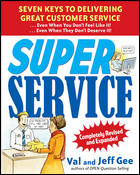Focus on Resilient: It's not just what you install, it's what you install over

The
steps you take before the floor goes down will have a major impact on the
floor's performance over the long haul. Here, an installer applies MAPEI’s
Plainseal MRB to a concrete substrate before sheet vinyl is installed. The
installation was at a school.
Judging from the letters and emails we receive, many of you have questions regarding sub-floors being prepared for a resilient installation. Namely, there seems to be some confusion over which leveling or smoothing compounds to use with the various types of substrates we’re seeing. That’s understandable. With fast-track construction and value-engineering, resilient flooring installers are encountering a wide variety of substrates. Not surprisingly, there is also no shortage of smoothing and leveling compounds available. So, what follows is a rundown of some of the details involved in getting a substrate ready for a resilient floor.
What are some things I need to know going in? When you are dealing with a concrete substrate, the condition of the floor can vary widely. If for example, it is a hard trowel finish (burnished), that will make it difficult to achieve a good mechanical bond. The smooth surface makes it difficult for adhesives, patches or levelers to stick. If there is trowel chatter, rather than adding another layer, you should ground out the substrate. A rained out or rough finished concrete, on the other hand, needs to be coated with either a Portland or cementitious patch. (This can be Portland cement mixed with other additives such as pozzalons, gypsum, and other minerals, or gypsum-based.) These can be either applied with a hand trowel or as a self-leveling compound.
Which is better: a self leveling coating or a hand trowel application? That’s a matter of time vs. money: A hand trowel patch is labor intensive, requiring approximately eight times more labor than a self-leveling application, but the patching compound is less expensive. If you are working with a soft latent concrete it needs to be removed and then leveled.
What if there is cracking? That’s to be expected. All concrete cracks. The question is to what degree. The water-to-cement ratios, curing, mix design and the spacing of control joints are all factors. If you see cracks, determine if they are active or dormant. There is nothing you can do to repair an active crack but a dormant crack can be repaired.
What if there is adhesive residue? It needs to be removed-or cutback to a thin residue. First, determine if the old adhesive is compatible with the new adhesive as well as the new flooring material. Remember, the old adhesive may be compatible with the new adhesive, but it may still stain. Make certain there are no ridges or puddles in the residue of the cutback then apply either patch or self-leveling material. Use at least 1/8". The cutback can be reactivated by the plasticizers in the vinyl backed material and be cycled into the material, causing a yellow stain. Be sure to follow the patch manufacturer’s recommendation for any additives or primers that may be required along with the mix ratio for powder to liquid.
What if you don’t remove the residual material? If the residuals are sealers, curing or parting compounds, they can compromise the adhesive’s compatibility and undermine its bond to the residual and the residual’s bond to the concrete. The flooring industry does not recommend going over these residuals. ASTM F-710 recommends that all sealers, curing compounds and parting compounds be removed.
How do you deal with moisture control coatings? These coatings are non-porous and should be treated as such. Many require a cementitious underlayment applied over the surface. Unless this coating is a minimum of 1/4" it should be considered non-porous.
If there is a wood underlayment, how do you handle the joint filling? If required by the manufacturer, the selection of a patching compound should be the type that has polymers, or has a PVA additive. That will give the patching compound flexural strength rather than compressive strength. The main risk with patching underlayment joints is over-watering the mix because the wood underlayment absorbs the liquid from the patch. To overcome this, mix your patch with the recommended powder to liquid ratio just prior to application. Then use a damp cloth to wipe the joints. This will slow the absorption of the wood and will allow the patch to go further.
When is skim coating a good idea? Some underlayments, because of graining or sanding, may require a skim coat to stop the irregularities in the surface from telegraphing through the finished floor. A polymer modified patch or one that includes a latex additive should be used. Be sure to stay with the manufacturer’s recommendations for mix and application. Never do the mixing of patching compounds directly on the surface of the underlayment. It will allow that panel to absorb an excessive amount of moisture, creating joint show-through.
What if I use a gypsum underlayment? Like patching compounds and self-levelers, gypsum is compromised by excessive water. It will weaken the compressive strength of the finished product, leaving it weak, dusty, and extremely absorptive.
What about surface prep for gypsum? Test for moisture then prep the surface by using a patching compound to fill dents and fractures that result from the construction process. Pick your patching compound carefully. There can be a chemical reaction between gypsum and Portland cements called ettringite, which resembles an alkali salts deposit. Also, most gypsum underlayments require a primer prior to the application of an adhesive. The primer slows the absorption of the substrate and enhances the bond of the adhesive to the gypsum substrate.
When can I install over an existing floor? Determining if an existing material is suitable to have resilient material installed over it requires some investigation. Is the existing material well-bonded, structurally sound, free from moisture or alkali damage and free from any floor polishes or waxes? Keep in mind, some of the resilient manufacturers have maintenance-free finishes that can compromise the embossing levelers’ bond to the material’s surface.
What about embossing levelers? There are many different types of embossing levelers on the market so choose carefully. Some are premixed, others you mix yourself. Some have water and others use additives. The powder-to-liquid ratios are extremely important because of the thin film that is applied to the surfaces of the existing material. Existing materials that have a deep embossing may require a second coat to prevent the pattern from telegraphing through the newly installed floor. Embossing levelers work well in a residential situation, but do not stand up very well to commercial application.
Anything else? Floor prep products have advanced dramatically over the last decade. Still, they require attention to detail during mixing and application. When done correctly, these products will serve well for the life of the resilient product.
Looking for a reprint of this article?
From high-res PDFs to custom plaques, order your copy today!





